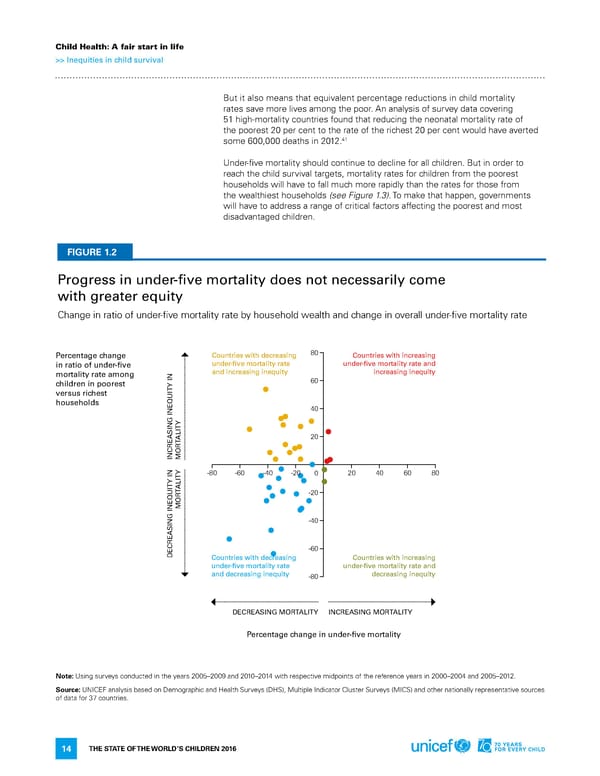Child Health: A fair start in life >> Inequities in child survival But it also means that equivalent percentage reductions in child mortality rates save more lives among the poor. an analysis of survey data covering 51 high-mortality countries found that reducing the neonatal mortality rate of the poorest 20 per cent to the rate of the richest 20 per cent would have averted 41 some 600,000 deaths in 2012. Under-five mortality should continue to decline for all children. But in order to reach the child survival targets, mortality rates for children from the poorest households will have to fall much more rapidly than the rates for those from the wealthiest households (see Figure 1.3). To make that happen, governments will have to address a range of critical factors affecting the poorest and most disadvantaged children. FIGURE 1.2 Progress in under-five mortality does not necessarily come with greater equity Change in ratio of under-five mortality rate by household wealth and change in overall under-five mortality rate Percentage change Countries with decreasing 80 Countries with increasing in ratio of under-five under-five mortality rate under-five mortality rate and mortality rate among and increasing inequity increasing inequity children in poorest IN 60 y versus richest UIT households q INE 40 y SINGALIT 20 T R o INCREAM y -80 -60 -40 -20 0 20 40 60 80 IN y ALIT UITT -20 q R o INEM -40 SING -60 DECREA Countries with decreasing Countries with increasing under-five mortality rate under-five mortality rate and and decreasing inequity -80 decreasing inequity DECREASING MoRTALITy INCREASING MoRTALITy Percentage change in under-five mortality Note: Using surveys conducted in the years 2005–2009 and 2010–2014 with respective midpoints of the reference years in 2000–2004 and 2005–2012. Source: UniCef analysis based on demographic and health Surveys (dhS), Multiple indicator Cluster Surveys (MiCS) and other nationally representative sources of data for 37 countries. The STaTe of The World’S Children 2016 14
 70 Years for Every Child Page 28 Page 30
70 Years for Every Child Page 28 Page 30